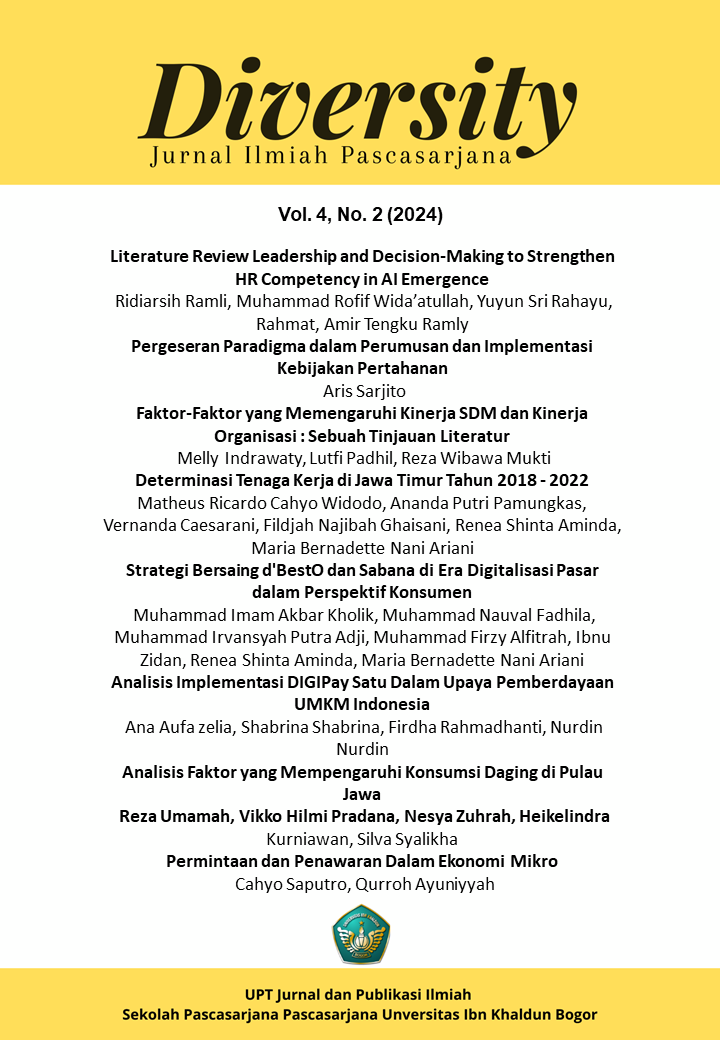Literature Review Leadership and Decision-Making to Strengthen HR Competency in AI Emergence
DOI:
https://doi.org/10.32832/djip-uika.v14i2.17024Abstrak
Leadership in AI emergence era is encountering substantial changes in the business environment as AI is implemented across organizations. This requires leaders to be able to implement the right strategies in the decision-making process to keep the new HR skills relevant. People who are not adaptive will easily be replaced by people who are better at new technologies, hence HR competencies are the main-focus that must be developed in organizations. Artificial Intelligence (AI) is an augmentation agent that makes it easier for humans to carry out their activities, in addition to having a very important role in leadership and decision-making, as well as strengthening the HR competency function. This research aims to describe the leadership and decision-making used in strengthening HR competencies in AI emergence using the literature review method. As a result, effective leadership and decision-making related to AI integration can improve productivity, innovation, and job satisfaction (HR competencies), enabling organizational competitiveness in the business environment to continue to grow. To improve organizational performance, leaders must be able to use AI technology in the decision-making process as it transforms into a human assistant that provides effective data-driven insights.







